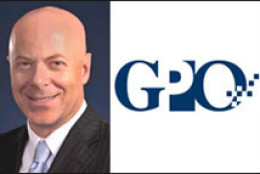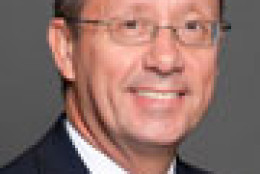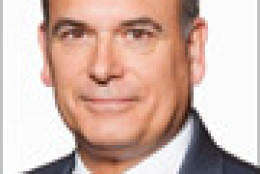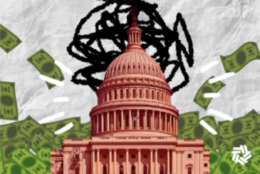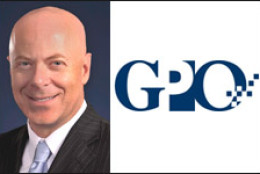Government Pension Offset
-
The U.S. Government Publishing Office has trimmed its workforce by 5 percent as a result of employee buyouts.
February 04, 2015 -
The Government Printing Office became the first legislative branch agency to put its email in the cloud. CIO Chuck Riddle said once that effort is completed, GPO will move other functions into the cloud.
October 20, 2014 -
The cyber attacks on the Government Printing Office and Government Accountability Office are the latest in a trend of heavier attacks on small agencies. Darren Van Booven, the chief information security officer and assistant chief administrative officer for the House of Representatives, tells Federal News Radio attackers are more sophisticated and they're starting to target small agencies. Rob Zitz is senior vice president and chief systems architect at Leidos, formerly part of SAIC. He's my guest for Industry Chatter today. He's my guest for Industry Chatter today. He says better cybersecurity starts with three letters: CDM.
July 24, 2014 -
Federal officials say Chinese hackers broke into the networks of the Government Accountability Office and the Government Printing Office back in March. While news of Chinese cyber attacks on federal agencies isn't unprecedented, the March attacks, first reported by the New York Times, have some observers scratching their heads. They say it's unclear why those two agencies would be targeted -- particularly in the case of GPO. Steve Bucci is director of the Douglas and Sarah Allison Center for Foreign and National Security Policy at the Heritage Foundation. He's also former deputy assistant Defense secretary. He said the attacks shouldn't come as a surprise on In Depth with guest host Jared Serbu.
July 18, 2014 -
The Government Printing Office its employees Tuesday that it planned to request authority from Congress and the Office of Personnel Management to offer buyouts and early outs to 1,850 of its employees. The agency aims to reduce its workforce by 100 positions or 5 percent.
July 01, 2014 -
New bipartisan legislation is aiming to rebrand the 153-year-old Government Printing Office. But that doesn't mean you'll stop seeing the GPO initials stamped on government documents any time soon. The bill, introduced by Sens. Amy Klobuchar (D-Minn.) and Saxby Chambliss (R-Ga.) last week, would retain GPO's familiar initials, but change the official name of the agency to the Government Publishing Office.
January 22, 2014 -
GAO's Mark Gaffigan talks about how the federal government will experience increased fiscal exposure due to climate change. Gary Somerset discusses the GPO's new Pinterest page. On Legal Loop, procurement attorney Joe Petrillo discusses a change in status for the Alaska Native Corporations. John Plaguta of the Partnership for Public Service discusses the critical skills gaps in the federal workplace. Former SEC Chairman Harvey Pitt talks about rule writing in the wake of the Dodd-Frank Wall Street Reform and Consumer Protection Act.
February 19, 2013 -
Jim Bradley of the GPO talks about The Plum Book. Administrator John Pistole discusses new security measures at the Transportation Security Administration. Dr. Patricia Hayes wants female vets to know VA is the right place for their healthcare needs. The Potomac Institute's Mike Sweetnam says the government's hodgepodge approach to cybersecurity is no way to prepare for a cyberwar.
December 03, 2012 -
As the needs of its customers become more digitally focused, the Government Printing Office is shifting from a "print-centric model to a content-centric model" in its new five-year strategic plan.
October 24, 2012 -
Dr. Andrew Von Eschenbach of the Manhattan Institute's Project FDA explains how a legislative mandate does not come with the funding needed to implement it. And Acting Public Printer Davita-Vance Cooks lays out the five-year strategic plan as the Government Printing Offices faces a digital future.
October 24, 2012 -
BethAnn Telford, an employee at the Government Printing Office, has battled brain cancer for the past seven years. But it isn't stopping her from competing this weekend in the IRONMAN World Championship. She takes Federal News Radio inside her workout and explains her motivation before the big race.
October 11, 2012 -
The next five to 10 years may represent a once-in-a-generation period of challenges and opportunities for the Federal government. The question isn't whether or not your organization will be affected by the shifts but whether or not your organization will be out in front of them. Reduced budgets combined with unchanged - or more complex - missions have resulted in increasing workloads, which have sent agencies searching for ways to leverage limited resources while striving to improve mission performance. So, how can agencies reduce inefficiencies and redundancies without significantly impacting their core missions?
July 23, 2012 -
Chuck Riddle, the Government Printing Office's chief information officer, said he's focused on innovation around five areas. The agency is piloting several new technologies, including mobile apps and a virtual desktop. May 3, 2012
May 03, 2012 -
Shortly after the Titanic sank 100 years ago, the Senate conducted an investigation into in the disaster. Transcripts of these hearings are available in libraries across the U.S.
April 13, 2012 -
GPO\'s Chief Technology Officer Ric Davis talks about launching the agency\'s first mobile app. Users will be able to access information about members of Congress on their mobile devices.
November 15, 2011


